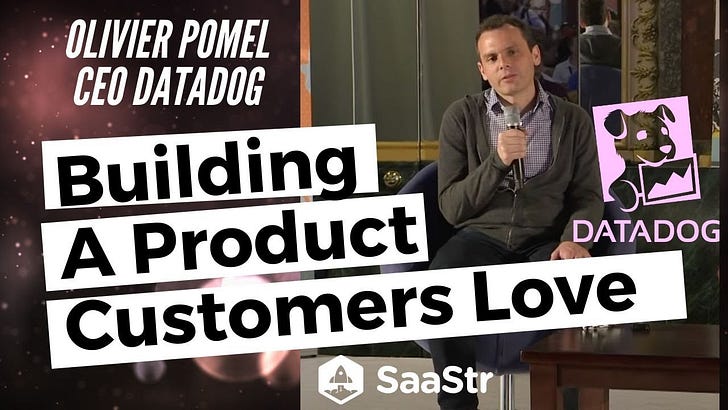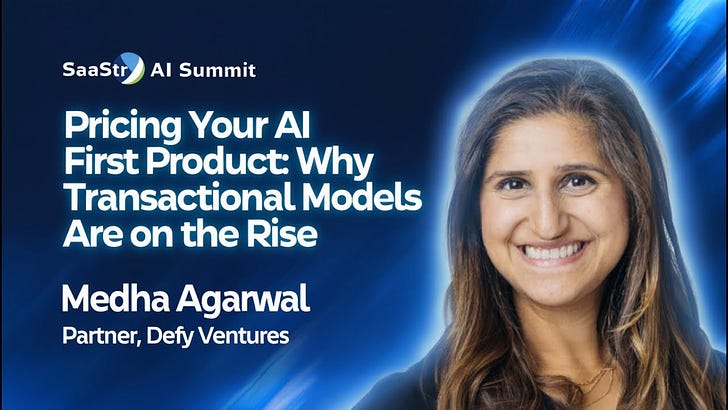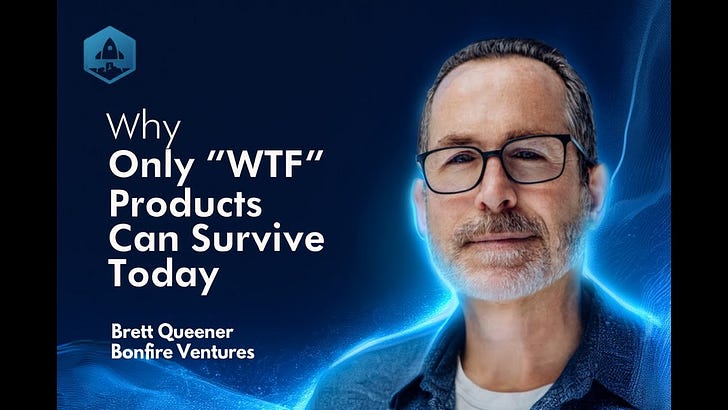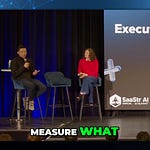From the SaaStr Annual / AI Summit – How three breakout AI companies rewrote the rules of enterprise sales. And see everyone at 2026 Annual + AI Summit May 12-14 2026 and SaaStr AI London Dec 2-3!
Speaker Bios
Talia Goldberg – Partner, Bessemer Venture Partners
Talia leads AI investments at Bessemer and has been at the forefront of understanding how AI companies break traditional SaaS metrics and business models.
Kelly Loftus – Head of Startup Sales, Anthropic
Kelly has scaled Anthropic’s startup sales team from fewer than 10 people to over 150 as the company grew from 250 to 1,300 employees in just 18 months.
Jacob Jackson – Machine Learning Engineer, Cursor (formerly OpenAI, Tab9, Super Maven)
A veteran of the AI coding space, Jacob has been building developer tools since 2018 and joined Cursor 8 months ago after working as a researcher at OpenAI.
Gorkem Yurtseven – CTO and Co-Founder, FAL (Features and Labels)
Gorkem leads the technical vision at FAL, the generative media platform that hosts open and closed source image and video models via easy-to-use APIs.
Top 5 GTM Takeaways
No Quotas, No Problem: Both Anthropic and FAL have completely abandoned traditional quota systems in favor of “shadow targets” due to unpredictable AI-driven growth patterns.
Technical Sales Teams Are Everything: All three companies prioritize hiring technically sophisticated sales teams that can use their own products and understand complex technical buyers.
Product-Led Growth Dominates: With massive inbound demand, these companies focus on fulfilling demand rather than generating it, requiring fundamentally different sales motions.
Shorter Planning Cycles Win: Traditional annual planning is dead—these companies are moving to quarterly or monthly targets due to rapid model improvements driving unpredictable adoption.
Internal AI Usage = Competitive Advantage: Companies eating their own dog food internally create better products and more credible sales conversations.
The traditional B2B/SaaS sales playbook may not officially dead—but it is at least according to three of the hottest AI companies on the planet. In a revealing panel discussion, leaders from Anthropic, Cursor, and FAL pulled back the curtain on how they’ve built hypergrowth go-to-market engines without quotas, with technical sales teams, and powered by product-led growth that would make traditional SaaS executives’ heads spin.
The Great Quota Rebellion
The most shocking revelation came early: none of these companies use traditional sales quotas. Kelly Loftus from Anthropic dropped the bombshell first: “We still don’t really have quotas. We have shadow targets.”
Why? “It’s really hard to predict exactly what is happening. The adoption is fast. A lot of this is driven by model intelligence, which you cannot predict over a long time period.”
FAL’s experience was even more dramatic. “Beginning of this year, we were looking to hire a head of sales,” Gorkem shared. “Any good head of sales candidate was trying to negotiate a quota system. We thought doubling next year would be a good target. During the interviews and negotiations, we grew maybe 50%. We were almost halfway there already. We decided this is useless. We are not doing quotas.”
Both companies are experimenting with shorter-term accountability—quarterly or monthly targets instead of annual quotas—because the pace of AI model improvements makes longer-term predictions meaningless.
Technical Sales Teams: The New Requirement
All three companies have made a fundamental bet on technical sales teams—and it’s paying off massively.
“We have a very technical sales team,” Jacob from Cursor explained, “partly because it’s a technical product, but also because there are a lot of ways the sales process can be accelerated with software and with Cursor.”
This isn’t just about understanding the product—it’s about being able to use AI tools to accelerate the sales process itself. Cursor’s sales team actively uses their own product to build tools that help with sales, creating a virtuous cycle of internal usage and external credibility.
Anthropic has scaled from fewer than 10 go-to-market people to over 150 as the company grew from 250 to 1,300 employees in just 18 months. Kelly’s approach focused on building for scale from day one: “When I joined, we did not have the concept of quotas. What I did was let’s just build a team around feedback, knowing this team is going to scale from 10 people to hundreds.”
Product-Led Growth on Steroids
The demand dynamics for AI products have created a fundamentally different go-to-market reality. Instead of generating demand, these companies are primarily focused on fulfilling it.
“At Cursor, many of our first enterprise customers bought Cursor because their developers came to their management and they said we need this tool—or in many cases they were already using it,” Jacob revealed.
This bottom-up adoption pattern means traditional enterprise sales motions are less relevant. “There’s so much demand for AI that people don’t need these massive sales teams and they can get things done with much leaner teams,” Gorkem observed.
The result? Revenue per employee ratios that “totally break the brain” according to Talia from Bessemer, with all three companies achieving growth metrics that shatter traditional SaaS benchmarks.
Internal AI Usage as Competitive Advantage
Perhaps the most overlooked aspect of these companies’ success is how aggressively they use AI internally—creating better products and more authentic sales conversations.
Anthropic’s Knowledge Bot: “One of our favorite use cases is a Slack channel where employees can ask questions, and Claude searches our internal knowledge bases and answers,” Kelly shared. “It’s been extremely useful for productivity and time to onboard, especially across time zones.”
Cursor’s Background Agents: Jacob highlighted their most advanced internal use case: “You can give tasks to AI that it will complete asynchronously. If it’s 90% right and 10% is off, you can easily drop into what the AI has been doing and correct it.”
FAL’s Research-Driven Hiring: Gorkem revealed an innovative approach: “We hired maybe four people through our research grants program. You send us an email with a project, we give you compute for a couple of weeks with no strings attached. People have been doing great projects, and we ended up hiring them.”
The New Metrics That Actually Matter
When traditional SaaS metrics break down, what do you measure instead? Each company has evolved different North Star metrics:
FAL focuses on customer concentration: “We care about big logos, but we want to make sure revenue is coming from at least 30 to 35 different companies rather than being concentrated at the top.”
Cursor prioritizes product truth: “The thing we care about most is whether we personally want to use it in our day-to-day life. Revenue lags behind users, and users lag behind the fundamental quality of the product.”
Anthropic emphasizes feedback loops: Rather than traditional sales metrics, they focus on “getting feedback on our models and continuing to work with partners to push model capabilities forward.”
The Economics Behind the Revolution
The fundamental reason these companies can abandon traditional sales playbooks comes down to unit economics that traditional SaaS executives would find terrifying—and liberating.
“Before, if you were selling a SaaS product, the marginal cost was very little,” Gorkem explained. “But with AI, everyone has less margins because it comes with a real cost to serve each customer.”
However, this trade-off enables something powerful: value-based pricing that scales with customer success. “When I first started selling developer tools for $49, I thought, ‘How much does this need to increase productivity to be worth it?’ It’s like 1% and it’s worth it,” Jacob noted. “Many people have been accelerated more than 2x already.”
As Talia summarized: “COGs are the new CAC. You can spend a lot on cost of goods sold, but it means you can’t be spending a lot on customer acquisition because if you have low margins and really high acquisition costs, that’s tricky. But the good news is all of your products kind of sell themselves.”
The Symbiotic Competition Model
Perhaps the most fascinating dynamic revealed was the relationship between Cursor and Anthropic—simultaneously customer/supplier and collaborative competitors.
“We want to partner with companies like Cursor to drive the models forward,” Kelly explained. “Cursor has given us feedback on our models in the coding area and had access to our models before we released them.”
Jacob reciprocated: “Whenever the models get better, we’re very happy because it means Cursor becomes more valuable to our users.”
This collaborative competition represents a new paradigm for B2B relationships in the AI era, where ecosystem advancement benefits all players.
Implications for B2B Leaders
The lessons from these three companies extend far beyond AI:
Question Annual Planning: In rapidly evolving markets, shorter planning cycles may be more effective than traditional annual quotas and targets.
Hire Technical Sales Talent: As products become more sophisticated, sales teams need deeper technical understanding to be effective.
Embrace Product-Led Growth: When possible, focus on fulfilling demand rather than generating it through traditional sales and marketing motions.
Use Your Own Product: Internal usage creates better products and more authentic customer conversations.
Collaborate with Competitors: In emerging markets, ecosystem advancement can benefit all players.
The traditional SaaS sales playbook assumed predictable growth, high gross margins, and demand generation challenges. AI companies operate in a world of unpredictable hypergrowth, real marginal costs, and demand fulfillment opportunities.
The companies that recognize this shift earliest—and adapt their go-to-market strategies accordingly—will define the next era of enterprise software.
Quotable Moments
Gorkem Yurtseven (FAL): “We thought doubling next year would be a good target for quotas. During the interviews, we grew maybe 50%. We were almost halfway there already. We decided this is useless. We are not doing quotas.”
Kelly Loftus (Anthropic): “We still don’t really have quotas. We have shadow targets. It’s really hard to predict exactly what is happening when adoption is fast and driven by model intelligence you cannot predict over a long time period.”
Jacob Jackson (Cursor): “Many of our first enterprise customers bought Cursor because their developers came to management and said we need this tool—or in many cases they were already using it.”
Talia Goldberg (Bessemer): “COGs are the new CAC. You can spend a lot on cost of goods sold, but you can’t be spending a lot on customer acquisition when you have low margins and high acquisition costs.”









